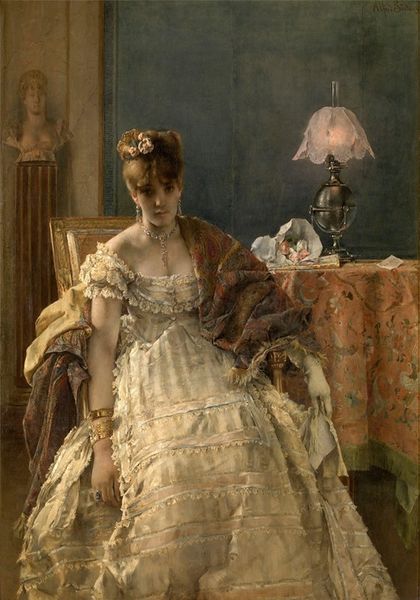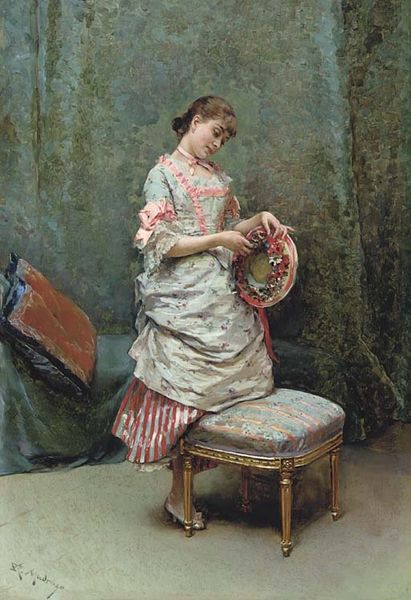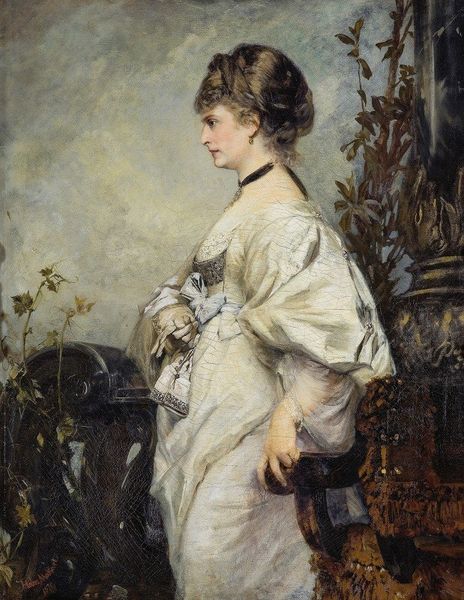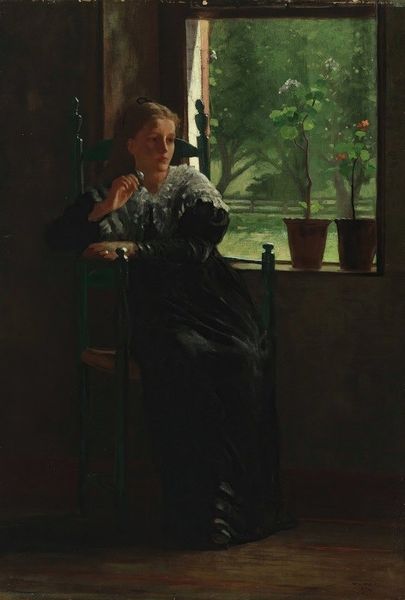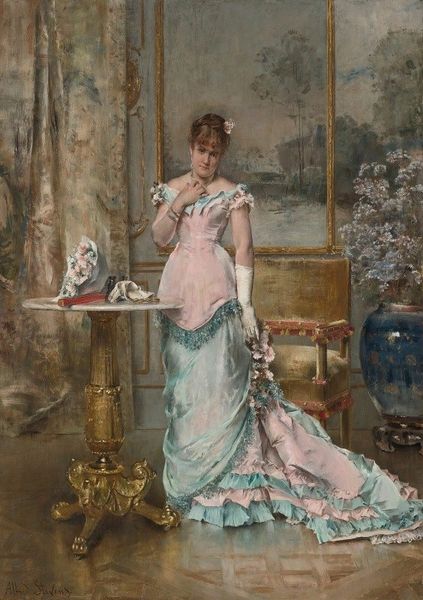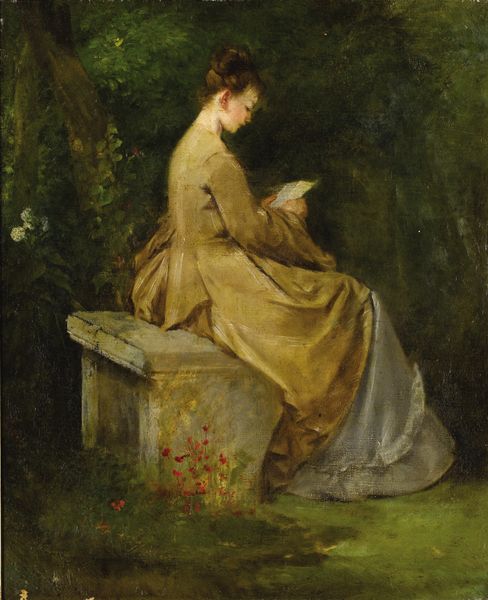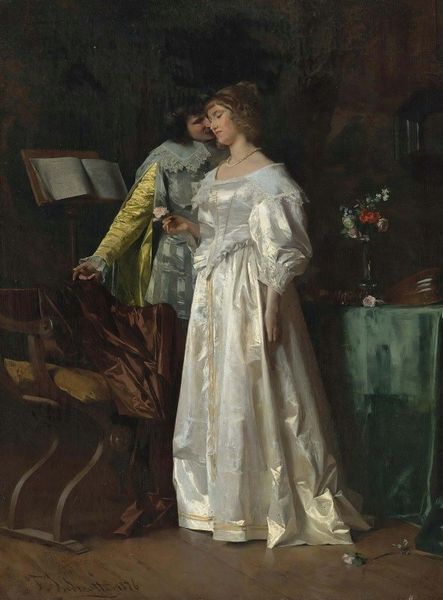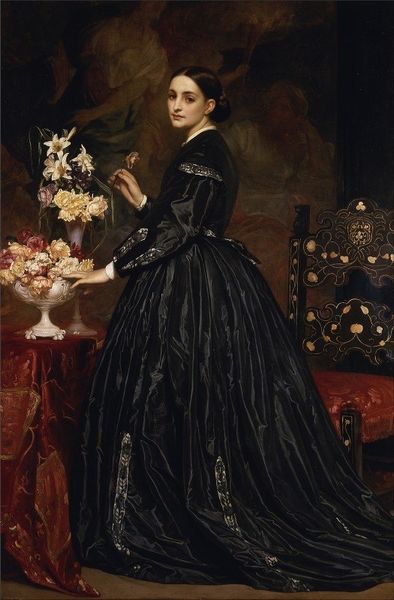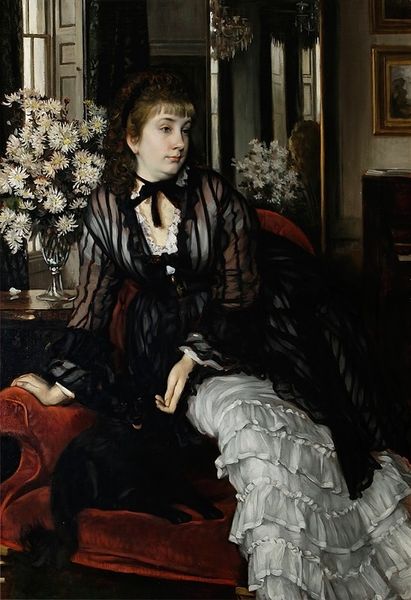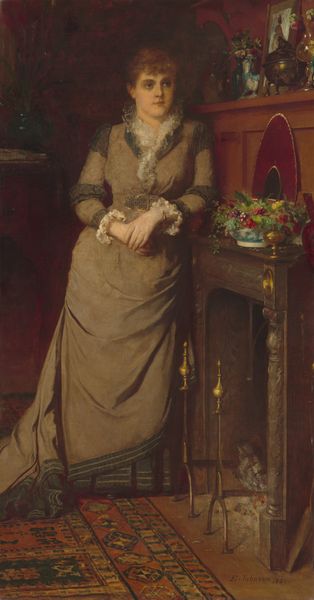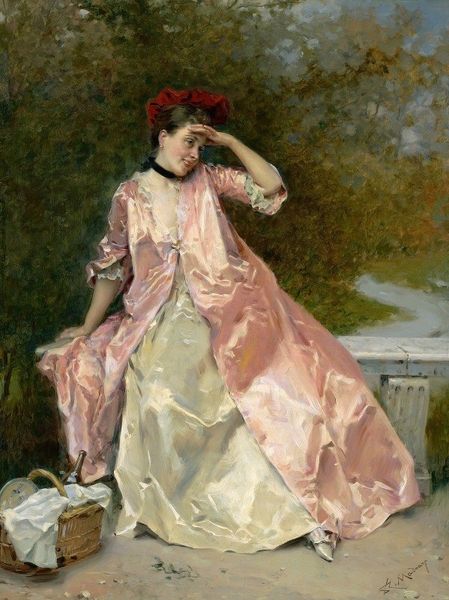
Copyright: Public Domain: Artvee
Curator: The somber elegance of this work immediately strikes me. There’s a restraint here. Editor: Indeed. What you're sensing is very much a hallmark of Alfred Stevens' work. We are looking at his oil on canvas, "Autumn Flowers," created in 1867. Stevens was a master of depicting the quiet lives of bourgeois women in 19th-century Paris. Curator: The flowers aren't vibrant in the way one might expect, but their faded colours seem to mirror a kind of melancholy present in the figure. They look more like memories of summer than a present-day celebration of beauty. The woman almost blends into the background, her dark dress suggesting mourning perhaps? Editor: That's a fascinating point about mourning. While not overtly stated, the symbolism of wilting flowers can certainly represent the transience of life. It’s interesting to think how societal constraints may have forced grief into such understated expressions for women. Notice too the closed fan, it adds a sense of something unsaid, perhaps. We also can’t forget that flowers were very codified with symbolic meaning in this era. Curator: I am curious about that vase, though. Its soft, almost opalescent quality juxtaposes beautifully with the fading blooms and the dark clothing. It looks like something precious, protected even by its fragility. The fact that it holds death makes the composition all the more fascinating, this kind of dance between preservation and letting go. Editor: That’s a perceptive comment. During this period, the rising middle class acquired these sorts of luxury items, and showcasing them in paintings conveyed status and taste. But more subtly, these items become symbols of domestic life as well, which was central to how these women were perceived. The way the painter has chosen to display those elements is important. Curator: So the image functions both as a signifier of societal status and emotional state. Do you feel like Stevens challenges or reinforces those conventions, using his art almost like a photograph or a social document? Editor: That's the central tension in Stevens's work. He navigates those waters so skillfully, depicting the aesthetic refinement of the Second Empire but also hinting at underlying anxieties. The positioning of the female subject against a stark background hints at the inherent isolation a wealthy bourgeoise might find themselves facing. I wonder if audiences at the time even grasped these nuances? Curator: It definitely offers food for thought. All the subtleties create a captivating tableau. Editor: Yes, exactly. I think, for me, understanding how this era defined women’s roles truly changes how you might interpret art such as this, doesn’t it?
Comments
No comments
Be the first to comment and join the conversation on the ultimate creative platform.
